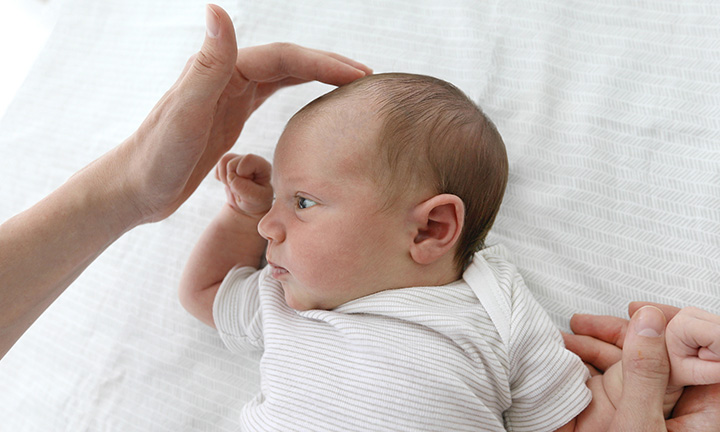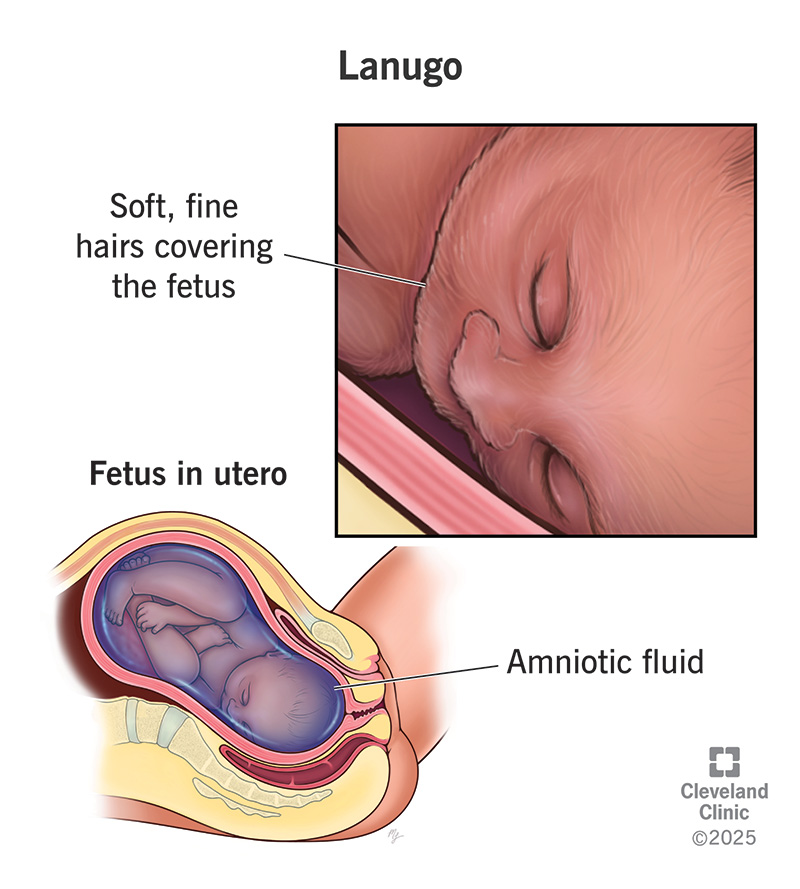1. The sense of taste begins to develop before birth.
The development of the sense of taste in a fetus begins early in pregnancy and involves a series of intricate processes. The taste buds, which play a crucial role in detecting different flavors, start to form around the seventh week of gestation.
Initially, taste buds emerge as small clusters on the tongue and the roof of the mouth. These clusters are composed of specialized cells that have the potential to differentiate into taste receptor cells responsible for detecting specific tastes. The development of taste receptors is influenced by genetic factors, as well as the chemical environment in the amniotic fluid surrounding the fetus.
Around the 13th to 15th week of gestation, taste receptor cells become more organized and develop sensitivity to the basic tastes: sweet, salty, sour, and bitter. The amniotic fluid, which the fetus swallows regularly, plays a crucial role in this process. The flavors of the amniotic fluid are influenced by the mother's diet, and this exposure to different tastes contributes to the development and maturation of the fetal taste buds.
Research suggests that a fetus can detect flavors in the amniotic fluid, and studies have shown that the preferences for certain tastes may be established during this prenatal period. For example, if a pregnant woman consumes a particular food regularly, the amniotic fluid takes on those flavor compounds, and the fetus may show a preference for that flavor after birth.
This early exposure to flavors through the amniotic fluid serves as a kind of "flavor training" for the developing fetus. It is thought to play a role in shaping the newborn's preferences for certain tastes and may influence their later food choices. However, it's important to note that the full development and refinement of the sense of taste continue after birth and throughout infancy.
The sleep patterns of newborns encompass various aspects, including the recommended new born sleeping time, position, and habits. On average, newborns dedicate around 16 to 17 hours to sleep each day. While this may seem like a substantial duration, it's important to note that their sleep occurs in short cycles, with frequent waking intervals for feeding due to their small stomach capacity. When considering the new born sleeping position, placing the baby on their back is highly recommended to minimize the risk of Sudden Infant Death Syndrome (SIDS). It is advised to avoid side sleeping positions, as the back position is deemed the safest practice. Additionally, the sleep environment plays a crucial role in ensuring the baby's safety. Creating a designated new born sleeping set involves using a firm mattress and eliminating soft bedding, pillows, or toys from the crib. It's not uncommon for newborns to be observed sleeping with their mouths open. This behavior is generally attributed to their petite nasal passages. Despite the perception of newborns sleeping too much, their sleep cycles are integral to their development. These cycles consist of active (REM) and quiet sleep phases, with the alternating patterns contributing to the overall duration of sleep. Understanding and adhering to recommended sleep practices contribute to providing a secure and conducive sleep environment for the healthy development of newborns.
Babies are indeed born with a strong sense of smell, and this sensory ability plays a crucial role in their early development and interactions with the world. The olfactory system, responsible for the sense of smell, is well-developed at birth, allowing infants to detect and respond to various scents. One of the most significant ways babies utilize their strong sense of smell is in bonding with their caregivers, particularly their mothers. Newborns can recognize the unique scent of their mother's breast milk, which helps establish a connection during feeding and promotes a sense of comfort and security. This early olfactory recognition contributes to the development of a strong emotional bond between the baby and the primary caregiver. Moreover, a newborn's heightened sense of smell serves practical purposes. It aids in locating the mother's nipple for breastfeeding and helps the baby identify familiar scents in their environment. This acute olfactory sense also contributes to the baby's ability to distinguish between different individuals, recognizing the scent of family members. A strong sense of smell in newborns is a natural and essential aspect of their sensory capabilities. It not only facilitates bonding and emotional connection but also assists in practical functions, enhancing the baby's ability to navigate and engage with their surroundings from the earliest moments of life.
The Moro reflex, also known as the startle reflex, is a natural and instinctive response observed in newborns. This reflex is characterized by a sudden and abrupt reaction to a perceived threat or change in the environment. The Moro reflex is typically present from birth and gradually diminishes as the baby grows older.
The Moro reflex is elicited by a sudden movement or a loud noise, causing the newborn to react in a distinctive manner. The sequence of the Moro reflex involves several components:
Extension: When a newborn feels a sudden movement or hears a loud noise, they instinctively extend their arms and legs away from their body.
Abduction: The baby then spreads their fingers and toes in a fan-like manner, creating a sense of "opening up" in response to the perceived threat.
Crying: The Moro reflex is often followed by crying as the baby expresses discomfort or surprise.
The Moro reflex is considered to be a primitive survival mechanism. In ancestral environments, it may have helped newborns cling to their mothers in response to a potential fall or other threats. As the nervous system matures, typically around 3 to 6 months of age, the Moro reflex diminishes, and the baby gains better control over their movements.
Observing and understanding the Moro reflex is a normal part of newborn development, and healthcare professionals often assess its presence during routine examinations. It's worth noting that while the Moro reflex is a common and expected response, its intensity can vary among individual infants.
9. Babies can hear and recognize familiar sounds shortly after birth.
Babies can hear and recognize familiar sounds shortly after birth due to the early development of their auditory system. The exposure to external sounds in utero, including the mother's voice, contributes to this recognition. Newborns often display a preference for familiar sounds, demonstrating sensitivity to speech patterns and exhibiting early bonding with their caregivers. This ability underscores the remarkable development of the auditory system in the early stages of life.
10. Newborns have a soft spot on their skulls called the fontanelle
Newborns have a soft spot on their skulls known as the fontanelle, which is a crucial and natural feature during early development. The fontanelle is a gap or space between the bones of the baby's skull, specifically at the intersection of the skull's bony plates. There are typically two fontanelles on a newborn's head: the anterior fontanelle at the top and the smaller posterior fontanelle at the back.
The fontanelles serve several important purposes:
Flexibility During Birth:
The fontanelles provide flexibility to the baby's skull during the birthing process. This flexibility allows the skull bones to overlap, facilitating passage through the birth canal without causing harm to the baby's delicate head.
Brain Growth and Development:
The fontanelles accommodate the rapid growth of the baby's brain during the early months of life. The brain undergoes significant development, and the soft spots allow for the expansion of the skull to accommodate this growth.
Assessment of Hydration and Health:
Healthcare professionals use the fontanelles as an indicator of a baby's hydration and overall health. A slightly sunken fontanelle may suggest dehydration, while a bulging fontanelle could indicate increased intracranial pressure, prompting medical attention.
Gradual Closure:
Over time, the fontanelles gradually close as the bones of the skull fuse together. The closure process begins within a few months after birth and is typically completed by the age of 18 to 24 months.
While the fontanelles may appear delicate, they are protected by a tough membrane. Parents and caregivers are generally advised to handle the baby's head with care, avoiding direct pressure on the fontanelles. Monitoring the fontanelles is a routine part of pediatric check-ups to ensure healthy development and timely closure.
11. Babies are born with a natural ability to swim
Contrary to a common misconception, babies are not born with a natural ability to swim. While they do exhibit certain reflexes and instincts in water, these responses are not indicative of innate swimming abilities. The primary reflex often associated with this misconception is the "diving reflex."
The diving reflex is present in infants and is triggered when their faces come into contact with water. This reflex induces a series of automatic responses, such as slowing the heart rate and redirecting blood flow to vital organs, which can create the appearance of a baby being able to hold their breath underwater. However, this reflex is a survival mechanism and does not imply actual swimming competence.
Actual swimming involves coordinated movements, breath control, and buoyancy, skills that infants need to learn through proper instruction and development. While some baby swim programs introduce water acclimatization and basic movements, it is crucial for any water-related activities with infants to prioritize safety and supervision. It's not recommended to rely solely on reflexes as a basis for assuming that babies can naturally swim. The development of swimming skills typically begins with lessons and guided experiences under the supervision of trained professionals or experienced caregivers.
12. Newborns prefer to look at high-contrast patterns.
Newborns have limited color vision, primarily perceiving the world in shades of gray, with their ability to distinguish colors gradually developing over time. At birth, their eyes are not fully developed, and the photoreceptor cells responsible for color vision are still maturing. The cones, which detect colors, are less active in newborns compared to adults.
High-contrast colors, such as black and white or bold patterns with sharp differences in brightness, are more visible to newborns. These patterns provide stronger visual stimuli that are easier for their developing eyes to detect. The preference for high-contrast colors is believed to be related to the initial stages of visual development.
As newborns' visual acuity and color perception improve, typically over the first few months of life, they gradually become more responsive to a broader spectrum of colors. Around 2 to 3 months of age, infants begin to develop the ability to perceive and differentiate between more subtle color variations.
Providing newborns with visual stimulation through high-contrast colors is not only visually engaging but also aids in the early development of their visual system. It's an effective way to capture their attention and encourage visual exploration during this critical period of sensory development.
16. Babies are born with the ability to breathe and swallow simultaneously
17. A baby's taste buds are sensitive to sweet flavors from birth
A baby's taste buds are sensitive to sweet flavors from birth, and this sensitivity serves as a natural preference that has evolutionary significance. The ability to detect sweetness is an inborn trait that likely evolved to ensure the acceptance of breast milk, which is naturally sweet.
Breast Milk Composition:
Breast milk is inherently sweet due to the presence of lactose, a natural sugar. Newborns' sensitivity to sweet tastes encourages them to feed on breast milk, providing essential nutrients for growth and development.
Evolutionary Advantage:
The preference for sweetness in newborns is thought to be evolutionarily advantageous. In ancestral environments, a preference for sweet flavors might have encouraged infants to consume the nutritionally rich and energy-dense breast milk, promoting survival.
Maturation of Taste Buds:
While sensitivity to sweet flavors is present from birth, a baby's taste buds continue to develop and refine over time. As they are introduced to a variety of foods during weaning and beyond, their taste preferences may evolve.
Foundation for Dietary Preferences:
The early sensitivity to sweet tastes lays the foundation for dietary preferences. It often influences food preferences throughout life, and caregivers may find that babies readily accept foods with sweet flavors.
Introducing Solid Foods:
When introducing solid foods, caregivers often begin with foods that have a naturally sweet taste, such as pureed fruits. This approach aligns with babies' inherent preference for sweetness and encourages the acceptance of new flavors.
A baby's taste buds are naturally sensitive to sweet flavors from birth, promoting the acceptance of breast milk and providing an evolutionary advantage for the early stages of growth and development. This preference for sweetness influences dietary preferences as babies transition to solid foods.
The unique smell of newborns, often described as the "new baby smell," is influenced by various factors that contribute to the bonding experience between parents and their infants. This distinctive scent originates from elements associated with the baby's time in the womb and their early moments after birth.
Amniotic Fluid Residue:
The scent of a newborn is shaped by the remnants of amniotic fluid that surrounded them in the womb. This fluid carries a distinctive fragrance that becomes associated with the baby's early experiences.
Vernix Caseosa:
At birth, newborns are covered in vernix caseosa, a white, waxy substance that protects their skin in the womb. The vernix adds a unique scent to the baby, and its presence is a reminder of the protective environment in which the baby developed.
Pheromones and Chemical Communication:
Pheromones, chemical substances that elicit social and emotional responses, are present in a newborn's scent. These pheromones are believed to play a role in fostering bonding and attachment between parents and their infants.
Breastfeeding Connection:
The act of breastfeeding also contributes to the bonding experience and the recognition of the baby's scent. The exchange of scents during breastfeeding enhances the connection between the baby and the mother.
Evolutionary Significance:
Evolutionary theories propose that the unique smell of newborns serves a purpose in strengthening the parent-infant bond. This scent-based recognition likely played a role in early human survival, promoting caregiving and protective behaviors.
The distinctive scent of newborns is a complex combination of amniotic fluid, vernix caseosa, and pheromones. This unique smell enhances the emotional connection between parents and their infants, fostering a sense of familiarity and attachment.
19. Babies can imitate facial expressions within the first few weeks.
Newborns have a higher heart rate than adults, and this is a normal physiological characteristic. The average resting heart rate for a newborn ranges from 120 to 160 beats per minute, whereas an adult's resting heart rate is typically between 60 and 100 beats per minute. Several factors contribute to the higher heart rate in newborns: 1. Size and Metabolism: - Newborns are much smaller than adults, and their higher metabolic rate requires a faster heart rate to meet the body's oxygen and nutrient demands. 2. Immature Nervous System: - The nervous system of a newborn is still developing, and the immature autonomic nervous system contributes to rapid fluctuations in heart rate in response to various stimuli. 3. Adaptation to the In-Utero Environment: - In the womb, the baby's heart rate is naturally higher. After birth, the heart rate gradually adjusts to the new extrauterine environment but remains elevated compared to adults. 4. Oxygenation Needs: - Newborns require efficient oxygenation, and a higher heart rate ensures that an adequate supply of oxygen is delivered to tissues, supporting their rapid growth and development. 5. Response to Stimuli: - The newborn's heart rate can be influenced by various stimuli, such as crying, feeding, or changes in the environment. These responses are part of the baby's adaptive mechanisms. As the baby grows and develops, the heart rate gradually decreases, reaching a more typical adult range by the age of 2 to 3 years. Monitoring the heart rate in newborns is a standard part of medical assessments, ensuring that it aligns with expected ranges for healthy development.
25. Babies are born with a natural reflex to root for the breast or bottle
Babies are born with the rooting reflex, an instinctual response where they turn their head and open their mouth when their cheek is touched. This reflex aids in locating and latching onto the breast or bottle for feeding. Considered a survival instinct, the rooting reflex is present from birth and gradually diminishes as the baby develops more control. It facilitates efficient feeding, integrates with the sucking reflex, and contributes to the bonding between the baby and caregiver during feeding times. Understanding the rooting reflex is crucial for caregivers to ensure successful breastfeeding or bottle-feeding experiences.
26. Newborns can see objects up to 12 inches away most clearly






















:max_bytes(150000):strip_icc()/baby-girls-eyes-2b3e5d3a95d04d8fa54fd3b3d5d51426.jpg)


